Text
RE:VIEW
RE:VIEW is a collaborative exhibition by recent graduates of the BA (Honours) Photography degree at Dun Laoghaire Institute of Art, Design and Technology in Dublin, Ireland.
This show promises a great variety of young and refreshing approaches to the medium of photography, video and film and presents 15 recent graduates from the class of 2017 as emerging artists, whose aims are to introduce their artistic practices to Dublin's art scene and audience.
Below on this site are previews and insights into the artists and their works as part of this exhibition.
0 notes
Photo

CARA PARK
Sinead McCarthy
The 'Cara Park' project is a photographic exploration through the eyes of 12 children who were participating in the youth organisation TravAct while living on the Cara Park halting site in Coolock.
The project seeks to reveal the gaze from within the Irish Travelling Community, free and unencumbered by external concepts or guidance. Care was taken to ensure that this personal view was not directed or influenced with a particular focus in mind and the children were encouraged to explore their world using their natural ability and ways of seeing. Disposable cameras were given to children aged 10-12 attending the youth organisation and they exposed 16 rolls of film producing a total of 384 images.
While this project is an attempt to create a representation from within the Irish Travelling Community through the eyes of Irish Travellers it does raise various issues particularly with regard to the inevitable curatorial presence required to bring a work like this to completion in some form of edited state. In spite of the best of intentions, projects like this raise questions concerning selectivity and power relationships. This was a challenge that was negotiated at all times by endeavouring to forefront the voices and perspectives of the children in any decisions regarding the work and its point of view.
Contact sheets from the entire project are also presented here to encourage viewers to look beyond the curatorial decisions and embrace yet another reading of the photographs that were not selected for printing and display.
- Sinead McCarthy
Youth Worker Statement
The aim of this session was to give the young people the tools to express themselves through art and for us to get an idea of where young people are at. Also, to make it as young person centred as possible.
There was also an element of social critical education within this session. The young people were asking each other questions on why they chose the images and I believe this resulted in giving them an outside perspective on their own culture and lives as young Traveller’s living in the Coolock area.
We brought the young people out to the halting site to take images of things that are of relevance to them. Myself, Bridgy and Sinead McCarthy visited the young people on the site and walked around the site with them.
We brought both groups of boys and girls to Travact to meet Sinead again in order to go through their images and the reasons as to why they took these images.
Sinead interviewed each person one by one and did a group review to choose the photographs.
- Paddy and Bridgy
0 notes
Text
SINEAD MCCARTHY
RE: THE ARTIST
Sinead McCarthy is a photographer living in Dublin, Ireland. Her current works predominantly focus on a curatorial process that aims to celebrate the individual perspective. For Sinead, photography is a medium that gives a visual tactility to the individual ways of seeing and feeling. In this way, photography may bridge communication between people.
Growing up in Longford, Sinead first became interested in photography after long-term illness, utilising this medium as a device to regain an understanding of herself and the world around her. She graduated with a BA (Hons) in Photography from Dun Laoghaire IADT, in 2017.
Her project ‘Cara Park’ was shortlisted in the photographic magazine Source among selected works from Ireland and UK under Source Graduate Photography 2017.
0 notes
Photo
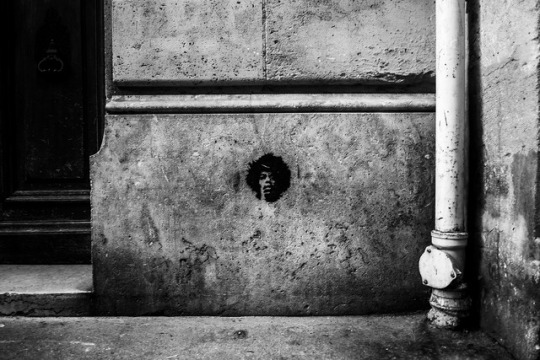
UNTITLED STEPS
Andrew Freeland
The Act of Strolling is the role that the flânuer holds within the world while remaining hidden lost among the crowd. During the act of strolling the flânuer accumulates knowledge of the urban space. While the flânuer’s origins come from Paris it has come to inhabit most urban spaces.
A Photograph taken in the confines of street photography can reflect the feelings from the photographer. So an unintentional self-portrait can be created and hidden within the image.
My steps kept taking me to unplanned places with a simple glance from someone or with the appearance of better light combined with how I felt along with the energy of the space. My steps were at the mercy of an unseen river that flows through the urban space whether that be Paris or Dublin. Being lost in the crowd, being lost in the stream.
0 notes
Text
ANDREW FREELAND
RE: THE ARTIST
Andrew Freeland is an Irish artist based in Dublin and Wicklow and works with the visual image. He has recently graduated from Dun Laoghaire IADT with a bachelor honours in Photography. His work involves portraits and landscapes. However, his current projects are focused on the flâneur and street photography. While working mainly with the still image and in creating books in his current project called Untitled Steps.
He has only exhibited his work twice. Once at his second year exhibition at Steambox Gallery and more recently at his graduate exhibition in IADT 2017 with his current project ‘Untitled Steps’ which got a mention by Aidan Dunne from the Irish Times.
“Paris, he became a flâneur, absorbing and capturing the energy, drift and flow of urban life and character.”
He is hoping to continue with his project and others and exhibit in other spaces in the future.
Email: [email protected]
0 notes
Photo
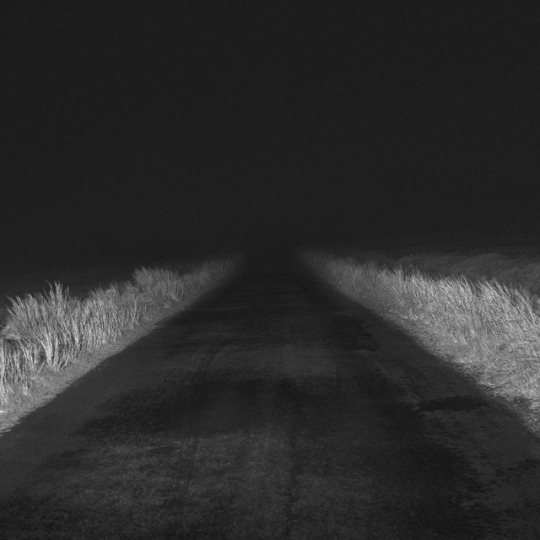
THE ROAD NOT TAKEN
Richard Mooney
As an artist I work with the photographic medium as a method of representing a variety of views and social topics typically through the form of a series. Using photography as a form of expression I focus on matters of importance, centering on the theme of mental positioning.
In this project, which is named after the poem by Robert Frost, I use typology as a method to convey feelings towards taking one path over another. The decisions we make in our lives result in some doors opening and others closing. Many of us often wonder what could have been if we had taken a different path.
0 notes
Text
RICHARD MOONEY
RE: THE ARTIST
Richard Mooney is a photographic artist residing in Dublin. Richard graduated from the institute of Art, Design and Technology in 2017 and is driven by working on projects varying from commissions, personal work and often the fine line between the two.
His work typically relates to themes of mental positioning in an attempt to unify individuals of various cultural backgrounds by presenting a form of photographic content as a common denominator that most can relate to and resonate with. For Richard it is paramount to pursue new challenges and push boundaries using the photographic medium as a form of expression.
0 notes
Photo

THE FOREST
Esther Kane
The Forest is a meditative journey through the wood at Glen of the Down in Delgany, Co. Wicklow. I wanted to explore the protective nature of the woods and reflect on childhood fairytales. The Enchanted Forest is always a main character or setting in many childhood stories whether playing as a sanctuary or a place of dread.
“Inevitably, they find their way into the forest. It is there that they lose and find themselves. It is there that they gain a sense of what is to be done. The forest is always large, immense, great and mysterious. No one ever gains power over the forest, but the forest posses the power to change lives and altered destinies.”
– Jack D. Zipes, The Brothers Grimm: From Enchanted Forests to the Modern World (2002)
0 notes
Text
ESTHER KANE
RE: THE ARTIST
Esther Kane is a Dublin based landscape photographer. She recently graduated from Dun Laoghaire Institute of Art, Design & Technology with a BA (hons) Photography. Her most recent project was part of the IADT Graduate Exhibition 2017 and her previous works were also featured in group exhibitions at Signal Arts in Bray and at Stemabox Gallery in Dublin.
Website: www.estherkanephotography.com
0 notes
Photo

LANDSCAPE AS WITNESS:
IRELAND’S FAMINE WALLS
Seán Laoide-Kemp
The Irish famine of 1845-52 has often been referred to as the Great Hunger. A nationwide food shortage resulting from seasons of potato blight left many starving, especially in the west of Ireland. Rather than being handed out food or money, some of the starving Irish were made to labour in Work Relief Schemes for charity to alleviate their suffering.
These
Work Relief Schemes resulted in the building of what are known as famine roads and walls. These constructions had no practical purpose, with roads leading to nowhere and walls separating barren, unused land.
The construction of these roads and walls during the Great Famine of 1845-52 has largely remained undocumented within Irish history, yet its traces remain visible across the Irish landscape. It is through these traces that the history behind the famine constructions can be seen and remembered today. The documenting of these traces prevents this history from ever being forgotten.
“...it is the landscape that has witnessed the event and I who am having to go into that landscape in hope of finding anything tangibly connected to the event.” - Chloe Dewe Mathews, The Guardian, June 2014
0 notes
Text
SEÁN LAOIDE-KEMP
RE: THE ARTIST
Seán Laoide-Kemp is an emerging artist, working with historical sources using lens-based media.
He has a first class honours BA in Photography from the Institute of Art, Design, and Technology (IADT), Dún Laoghaire, Co. Dublin. Influenced by Chloe Dewe Mathews and her work Shot at Dawn, he practices mainly in the genre of Aftermath Photography - photographing the location of dark events after they have taken place.
This particular genre combines two of his great passions: history and photography. His aim is to bring uncovered moments to light by documenting the role of its forgotten people. In 2016 his project The Landing was included in an exhibition entitled "Photography in Space, Space in Photography" as part of the International Photography Symposium in Galerie Ladislava Sutnara, Plzen, Czech Republic.
He received a distinction for his final year project entitled Landscape as Witness: Ireland’s Famine Walls. An image from this project was chosen by IADT to present to Philip King (the Irish musician, filmmaker and broadcaster) at the opening of the Graduate Show in 2017. He also received a distinction for his final year dissertation entitled Exposing History: An Investigation into Aftermath Photography as an Historical Source, which explored the use of Aftermath Photography as a vehicle for documenting history. Seán was awarded a scholarship in 2017 to carry out an MSc by Research in IADT to continue his study of Ireland’s forgotten famine history.
Born in Manchester, England, Seán works as a freelance photographer based in Co. Wicklow, Ireland.
Website: https://www.laoidekemp.net
Email: [email protected]
0 notes
Photo
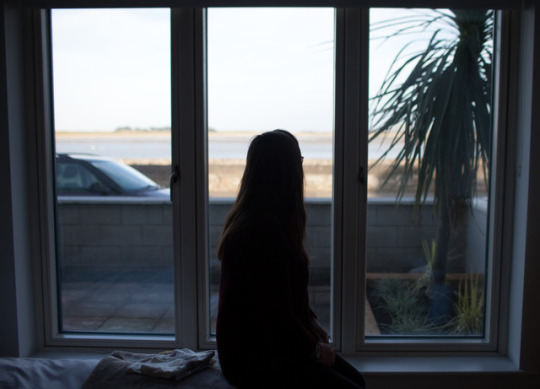
MOVING ON
Patricia Healy
Moving on is a lot harder than it seems
trying to remove yourself from a place you once called home
looking beyond where you thought you would always be
views appear less beautiful
whilst trying to fathom the new
seeing glimpses of oneself in separate spaces
reflecting on a life lived through memory
decaying relics of a place once called home
connecting the old with the new
and finally, moving on.
- Patricia Healy
0 notes
Text
PATRICIA HEALY
RE: THE ARTIST
Patricia Healy is a photographer from Dublin, Ireland. She mainly explores portraiture and narrative through photographs, these are areas in photography she finds to be very broad and visually effective to a viewer. Patricia likes to keep her images simple, with complex thinking behind them. This serves as a contrast for the viewer to learn to see beyond simplicity and open their minds to more.
Growing up in Baldoyle, Dublin Patricia always had an interest in photography. But it was not until she was applying to university that she decided to think of photography as more than a past time. Patricia is now a graduate of a BA in Photography from the Institute of Art, Design and Technology, Dun Laoghaire, Dublin.
0 notes
Text
LAURA BATEMAN
RE: THE ARTIST
Laura Bateman is a photographer based in Cork. In her work, Laura explores a broad range of topics through visually simple landscape and portraiture imagery. Mainly through the medium of photography, Laura explores contemporary issues in today’s society such as the façade of social media, binge drinking and sexual identity.
Email: [email protected]
0 notes
Photo
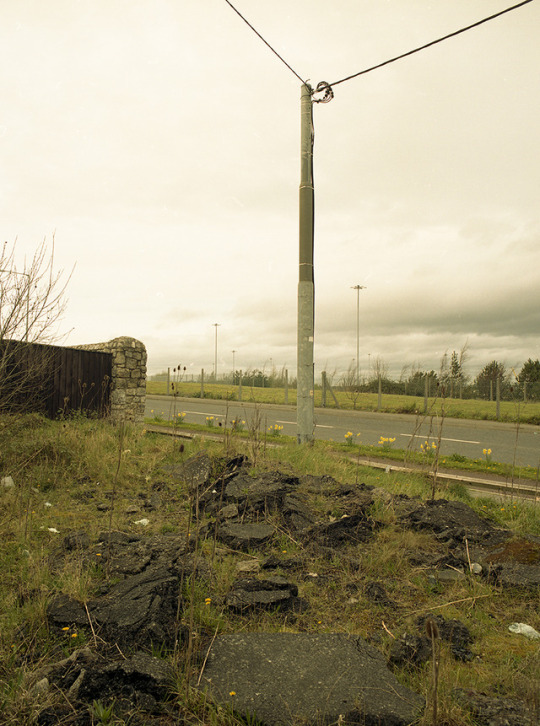
NON PLACES
Killian Walpole
The idea of suburbia has been fundamentally ingrained into society due to its idealistic nature and the power of the media. I am surrounded by Utopian depictions of a false rhetoric that suburbia provides instant happiness, friends and warmth. The suburbia that I know and love is green and grey. They are dirty and wet. They feel somewhat isolated but yet are filled with people locked in their houses neat in rows like a perfectly stacked shelf in a supermarket.
I find they are usually ignored by most people as they are perceived to be a practical space to move from point A to point B. French anthropologist Marc Augé used the term "Non Place" which I feel encapsulates exactly what they are.
The anonymous and non descriptiveness of the sprawling lands are calming where one can truly be on their own undisturbed to the chaotic world which surrounds us.
0 notes
Text
KILLIAN WALPOLE
RE: THE ARTIST
Born in 1994 in Dublin city, Killian began taking photos at the age of fourteen. Since then he has studied his craft in both IADT Dun Laoghaire and Edinburgh Napier University absorbing inspiration from all aspects and environments which has helped him define his work in the field of documentary photography as well as visual activism and landscape photography.
He has exhibited this work in various forms including the "Ode to Crept" exhibition in the Steambox Gallery as well as appearing in "Photography in Space, Space in Photography" as part of the International Photography Symposium in Galerie Ladislava Sutnara, Plzen, Czech Republic. During this time he has also worked as an event photographer for various Dublin nightclubs recording concerts and nights out.
Most recently he has exhibited as part of the IADT graduate show in 2017. Elements of this piece entitled “Non Places” are featured in the Office of Public Works. Currently he is finished his final year of college and hopes to continue on with his work in other artistic institutions or abroad.
Website: http://killianwalpolephotography.format.com
0 notes
Photo
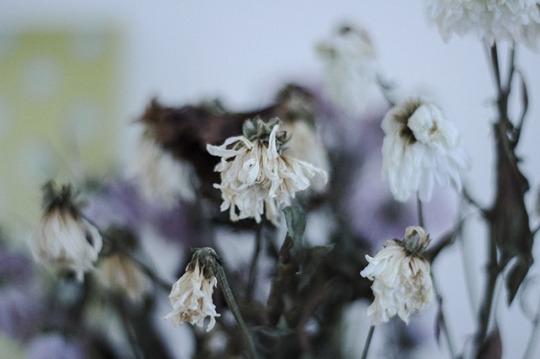
21 | 7
Jessica Skelton
This body of work deals with issues that surround the oral contraceptive pill. Originally the pill was invented to give women control and freedom over their own bodies but this work sheds light on the negative side and effects of this type of contraception. It questions the safety of the pill that most women take on a day-to-day basis and are perhaps controlled and restricted by it. Are they aware of the damage to the body, emotionally and physically? The work also has sadness to it as it portrays a longing for something that is not there.
0 notes